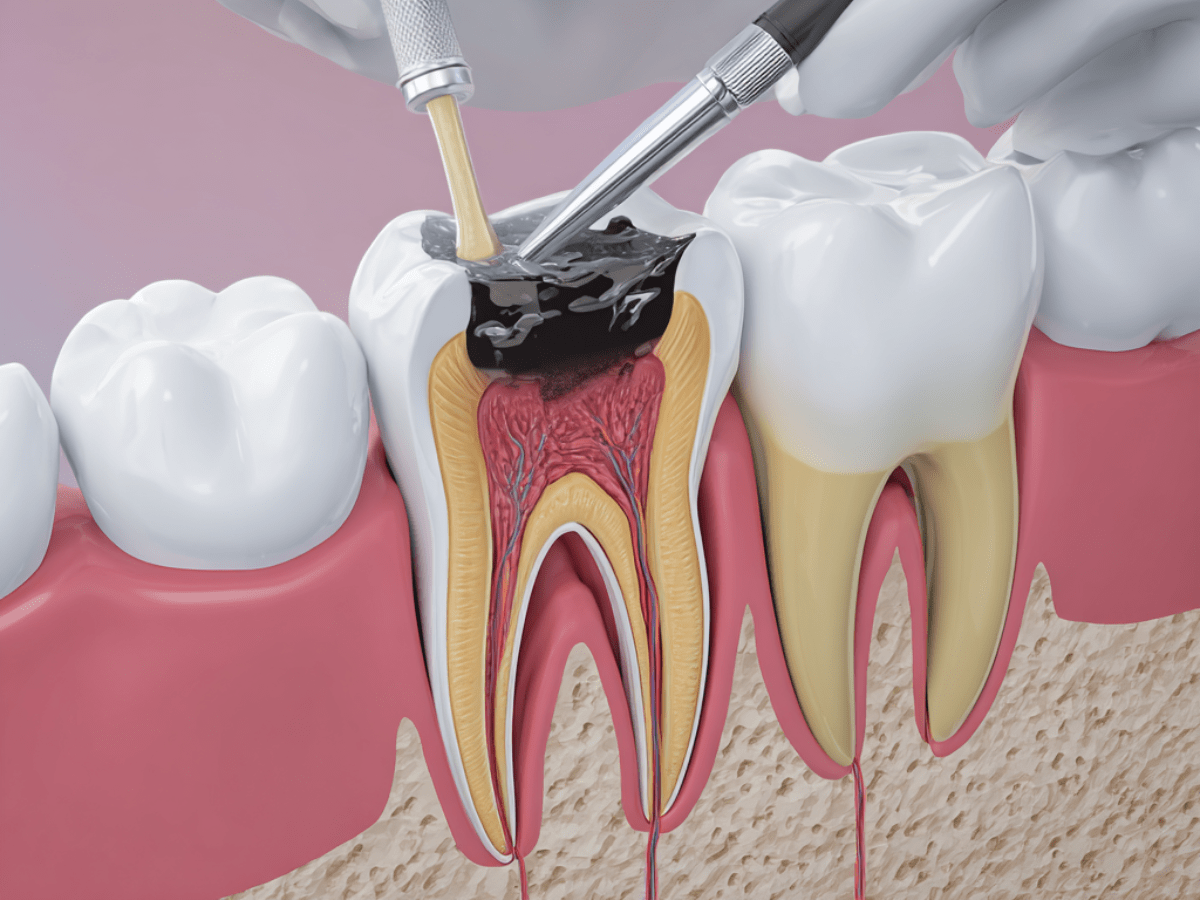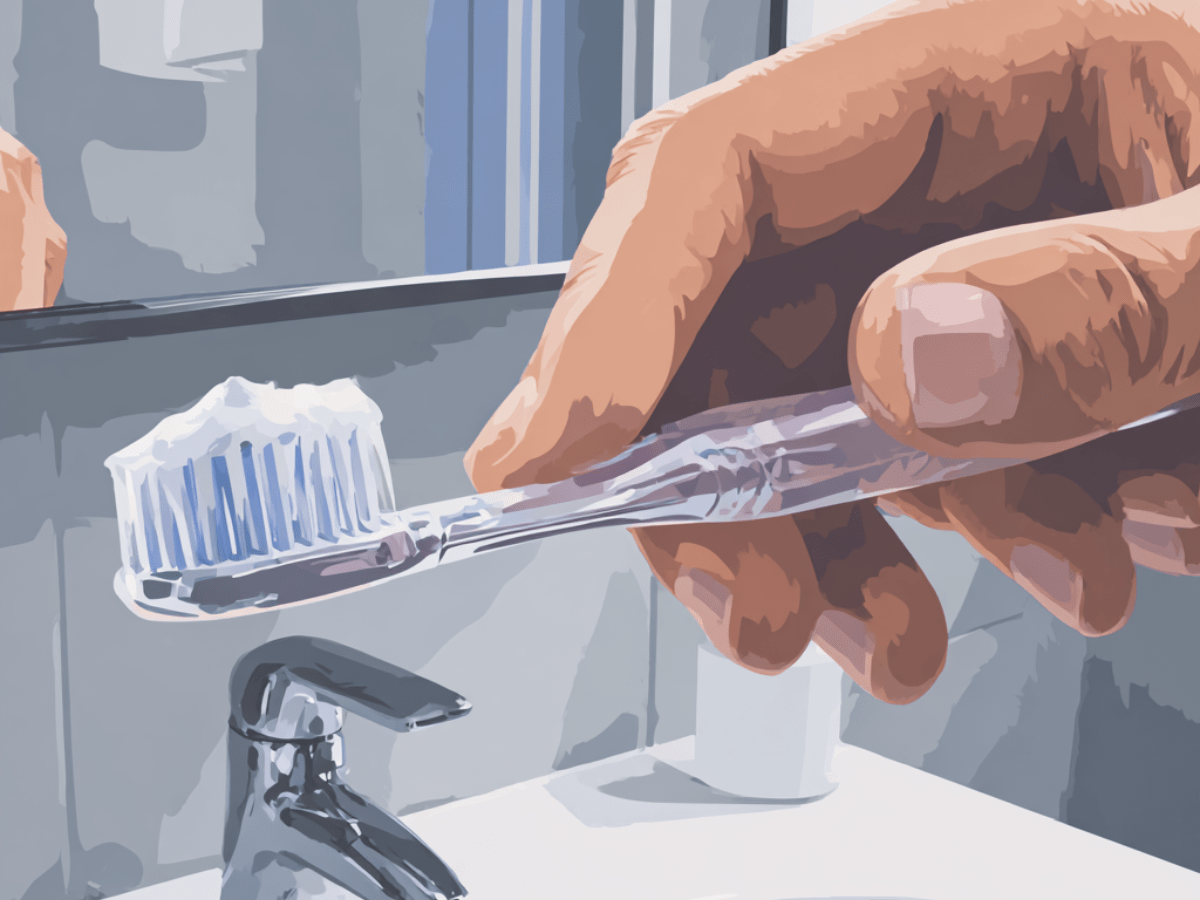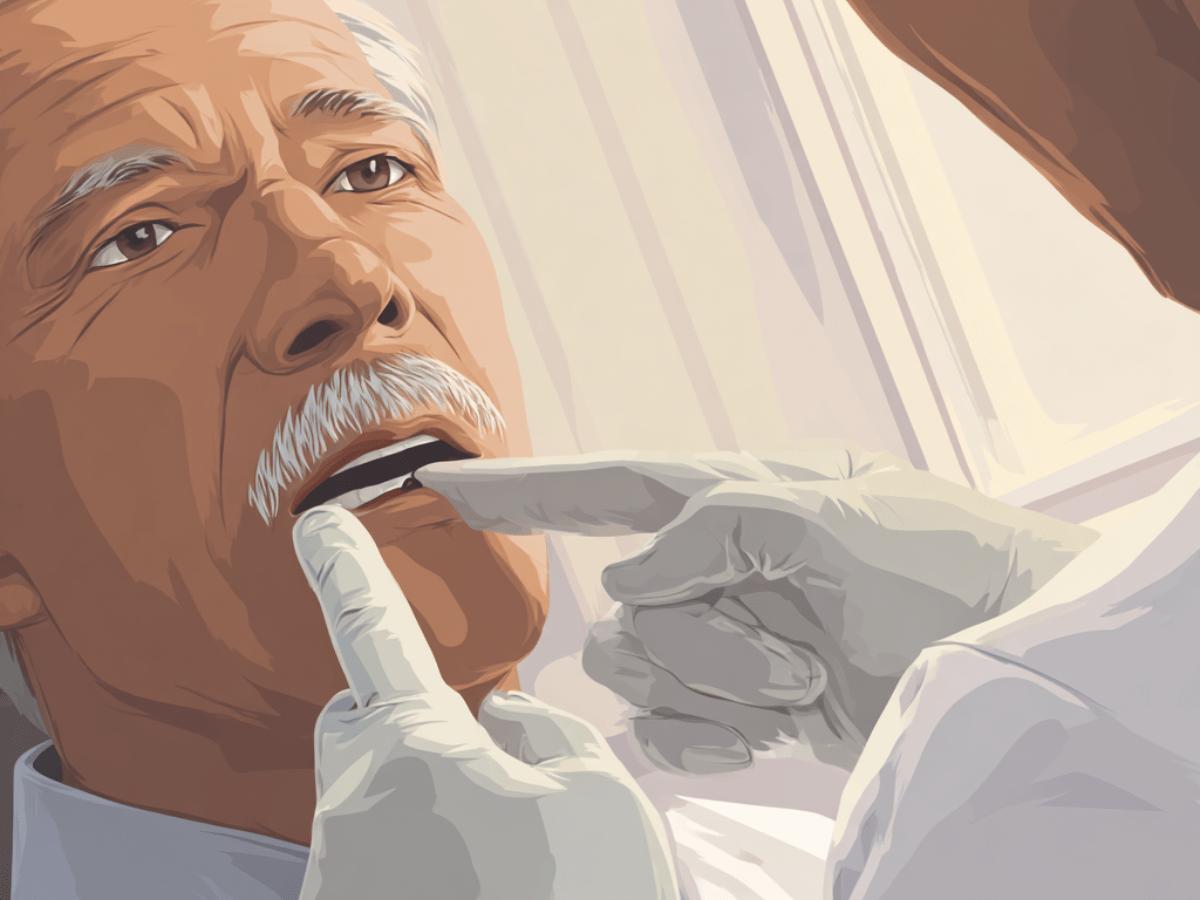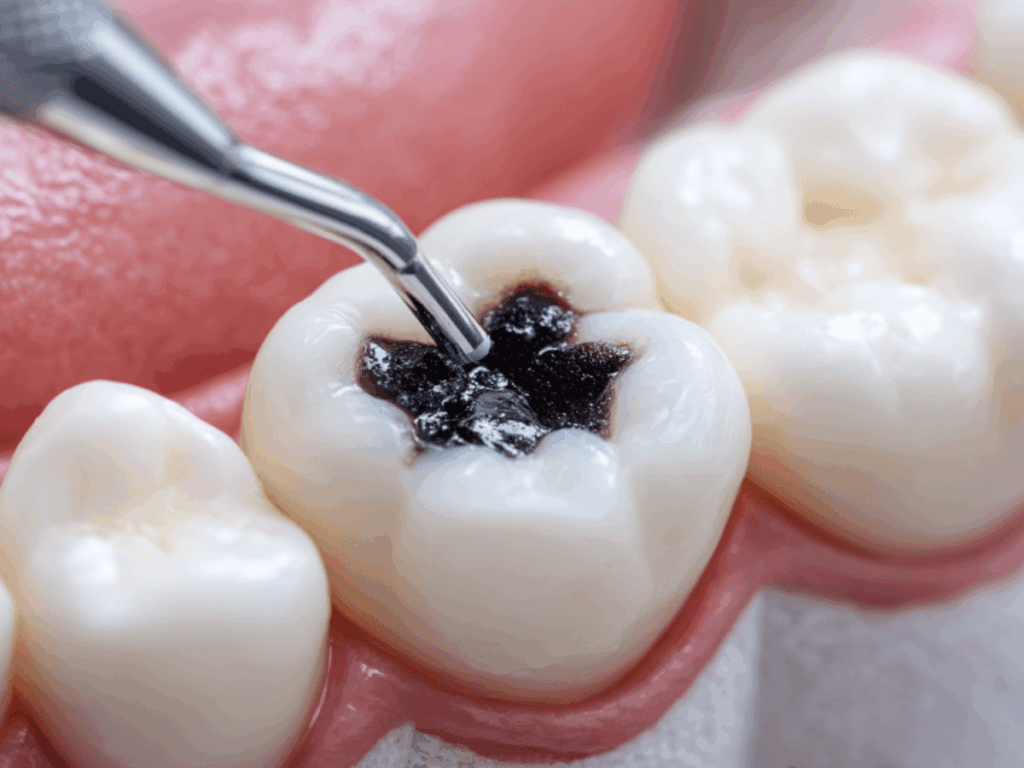Silver diamine fluoride (SDF) is a clear, liquid solution made from silver, fluoride, and ammonia and it offers a minimally invasive way to stop early tooth decay without the need for drilling or numbing. It’s especially helpful for children, patients with anxiety, or anyone who may need an alternative to traditional fillings.
How it works:
- Silver kills bacteria: The silver component acts as an antimicrobial agent, breaking down the bacteria responsible for cavities.
- Fluoride strengthens the tooth: Fluoride helps rebuild and harden the enamel through remineralization, making the tooth more resistant to future decay.
- Ammonia keeps everything stable: Ammonia stabilizes the solution so it remains effective and easy to apply during treatment.
Together, these ingredients not only stop decay where it starts but also form a protective barrier that helps prevent it from spreading.
SDF is often used when:
- A child is too young to tolerate traditional fillings
- A patient has dental anxiety or special healthcare needs
- Decay is caught early and confined to the surface
- There’s limited access to care or a temporary solution is needed
Because the application is quick, painless, and doesn’t require numbing, SDF can be a great option for families looking for a stress-free way to manage small cavities.
Benefits of Silver Diamine Fluoride Treatment
Silver diamine fluoride (SDF) is changing the way we manage dental caries, especially in children, older adults, and patients who need a gentler approach to care. With nearly 90% of adults between 20 and 64 having experienced tooth decay, there’s a growing need for non-invasive treatments that can stop cavities in their tracks. As a class II medical device, SDF offers a safe, effective way to arrest caries without the stress of drilling or anesthesia.
1. Stops cavities from progressing
SDF works by preventing carious lesions essentially stopping decay in its tracks. It helps preserve the affected tooth by hardening carious dentin and preventing bacteria from spreading deeper into the tooth structure.
2. Ideal for young children and patients with dental anxiety
For patients who feel uneasy about dental visits, especially young children, treatments that minimize discomfort can make a big difference. Techniques that support overcoming dental anxietyhelp build trust early on. That’s why silver diamine fluoride is often used to manage caries in primary teeth and first permanent molars, especially in preschool children who may not yet be ready for traditional restorations.
3. Fast and painless application
The procedure takes only a few minutes and doesn’t require special equipment. SDF can be used to treat caries quickly during a regular dental visit, making it ideal for both families and busy dental clinics.
4. Helps manage caries in hard-to-reach areas
SDF can be used on multiple tooth surfaces, including places that are difficult to clean or restore with conventional fillings. This makes it useful in managing active caries lesions, especially in patients who have limited access to ongoing care.
5. Supports long-term caries control
Silver diamine fluoride arrests caries progression effectively and safely. It plays a key role in dental caries management by reducing the number of bacteria on the tooth and helping to promote remineralization.
6. Cost-effective and widely accessible
SDF is affordable and easy to store, making it useful in community outreach, school-based programs, and general dental practice. In some settings, it’s referred to as the silver fluoride bullet for its simplicity and effectiveness in controlling caries progression.
Possible Downsides of Silver Diamine Fluoride
A single application of 38% SDF solution can effectively arrest and control caries compared to standard oral care makes it a compelling option but like any dental treatment, silver diamine fluoride (SDF) comes with trade-offs.
Some patients or parents may still want to weigh the following before moving forward:
- It permanently stains the cavity dark: The most noticeable side effect is that SDF causes the treated carious tooth tissue to turn dark brown or black. This is actually a sign that the caries lesion has been successfully stopped. but it can be a cosmetic concern, especially if the tooth is visible when smiling. Healthy tooth structure will not be stained.
- It may not be right for every case: SDF is most effective for arresting dentine caries in its early stages. It may not be suitable for deeper carious lesions, teeth with pulp involvement, or situations where a child is experiencing pain or infection. In some cases, your dentist may recommend a subsequent restoration, such as a glass ionomer cement or resin composite, after the SDF has done its job.
- It doesn’t restore the tooth’s appearance or structure: Because SDF is designed to arrest dental caries, not remove decay or rebuild the tooth, it doesn’t replace lost enamel or fill in holes. If a tooth needs to be reshaped or restored, additional dental treatment may be needed later.
- Temporary staining of soft tissue is possible: If the solution comes into contact with lips or gums during application, it may cause a temporary dark stain on the soft tissue. This usually fades within a few days and isn’t harmful.
- Not yet universally accepted for all ages: While supported by organizations like the American Dental Association and studied in numerous randomized clinical trials, SDF is still used off-label for managing caries in some permanent teeth. Your dental provider will help determine if it’s the right option based on your child’s needs and the latest dental research.
Aftercare Tips for Silver Diamine Fluoride Treatment
Silver diamine fluoride is a simple, non-invasive way to stop cavities from progressing, but what happens after the appointment matters too. Here are some gentle, practical ways to support your child’s smile at home while addressing common concerns about the treatment:
1. Don’t be alarmed by discoloration

It’s completely normal for the treated area to turn dark after SDF treatment. This darkening means the carious dentin has been successfully neutralized. While the color won’t fade, it signals that the decay has stopped. If the appearance is a concern especially on front teeth, your dentist may recommend a subsequent restoration (like a white filling) at a later visit.
2. Be gentle with the area for the first 24 hours

Avoid brushing the treated tooth too aggressively for the first day. This gives the silver fluoride time to settle. After that, resume regular brushing and flossing to keep plaque and harmful bacteria from returning. Using a soft toothbrush and a fluoride toothpaste can help maintain comfort and prevent future dental caries.
3. Skip sticky or hard foods for a day

SDF is applied with a tiny brush (or micro brush) and dries quickly, but it’s best to avoid foods that could dislodge any fragile areas. Encourage softer options like yogurt, oatmeal, or scrambled eggs right after treatment.
4. Watch for any soft tissue staining

If the solution touched the gums or lips, you might notice a dark spot. It’s harmless and usually fades within a few days. You don’t need to apply anything unless directed otherwise.
5. Return for follow-up if recommended

Because SDF doesn’t rebuild the tooth, it’s important to stay on top of routine care. Knowing how often you should get a dental checkup helps your provider monitor whether the treated area remains stable or needs additional support. In many cases, your dentist may recommend a follow-up to reassess the tooth or place a filling.
6. Support the results with daily habits

A balanced diet rich in nutrients can help strengthen teeth and gums from the inside out, which is why understanding the role of nutrition in oral and dental health is just as important as brushing. Encourage twice-daily brushing, limit sugary snacks, and don’t skip regular cleanings.
A Gentle Way Forward in Cavity Care
Silver diamine fluoride has changed the way dental professionals approach early cavity treatment especially for patients seeking less invasive options. Its ability to arrest dental caries, reduce sensitivity, and protect the tooth structure without the need for drilling makes it a valuable tool in modern dental care.
At Elizabeth L. Wakim DDS, we believe that innovation should serve comfort and clarity. That’s why we take the time to explain your options, including minimally invasive solutions like SDF, and guide you through every step of your care. From your child’s first cavity to maintaining your own oral health, we’re here to help you make confident, informed decisions.
If you’d like to explore whether silver diamine fluoride treatment is right for you or your child, we invite you to contact our office at (724) 558-8222 or use our contact form to schedule a personalized consultation.

